How to get your kids to exercise
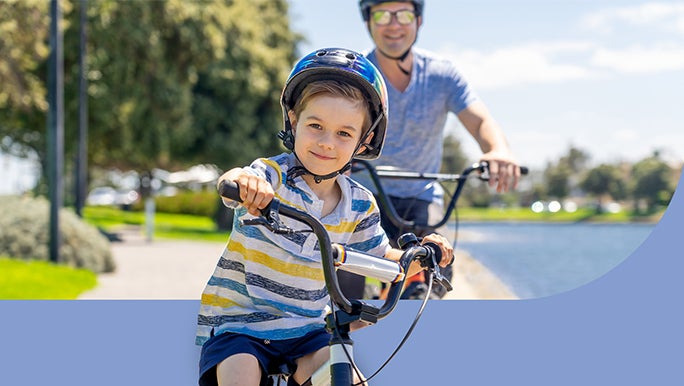
If you’re finding it hard to get your kids to exercise, you’re not alone. Children enjoy being entertained in front of a device, so you’ll probably need to remind them that exercise can be fun too.
Physiotherapist Brad McIntosh says that being physically active is important for kids. “They should be doing a variety of exercises that incorporate balance, strength, speed, flexibility and coordination. But most importantly, they should do exercise they enjoy.”
He explains that children need to develop a positive association with activity and exercise that will last throughout their lives.
What does being ‘physically active’ mean for kids?
Kids need to stay active, but how much exercise does that actually entail? The Australian Guidelines recommend that:
- kids aged 3-5 years: at least 180 minutes spent in a variety of physical activities, of which at least 60 minutes is energetic play, spread throughout the day
- kids aged 6-17 years: accumulate 60 minutes or more of moderate to vigorous physical activity per day involving mainly aerobic activities.
“Children should be active at any age,” Brad adds. “But don’t force them to do a particular activity. If they’re not having fun, try something else.”
He says that teaching kids to want to exercise is just like encouraging them to read. “Find a book (or activity) they enjoy, and you’ll plant a seed. Start small if you have to, and put the focus on fun.”
Should kids avoid some activities?
Brad cautions that not all exercises are safe for all children. For example, kids younger than six shouldn’t do any strength training (repeated exercises using weights, resistance aids or their bodyweight).
From age seven until puberty, they can incorporate strength training into their exercise programme. “But,” he adds, “ they should use bodyweight resistance only, and focus on good technique and control.”
Good bodyweight exercises for children include multi-joint movements like burpees, squats, lunges or push-ups. However, to avoid injury, Brad recommends hiring a professional trainer to teach children the correct technique for each exercise.
Then, once a child hits puberty, introducing some resistance into their strength training is OK. But Brad recommends ensuring they increase the weight gradually and monitoring them.
He also says that unless your kids participate in elite sports, they should avoid sustained aerobic activity like long-distance running. “Instead, encourage them to play games and do fun activities involving running for a purpose, like chasing after a ball.”
Of course, every kid is different, so Brad recommends talking to your GP or physiotherapist if you have specific questions.
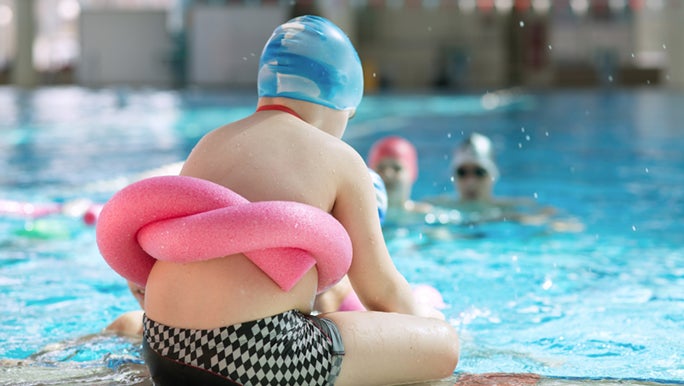
Children should be active at any age, but don’t force them to do a particular activity. If they’re not having fun, try something else.
Kid-friendly exercise
There are so many fun sports for kids to play. With regular training and competitions, sport can easily become a big part of your child’s lifestyle. However, not all sports suit all kids, so it’s normal for them to try a few before they find one they love.
Some of the most popular kids’ sports in Australia are:
- soccer and football
- netball and basketball
- Nippers and swimming
- gymnastics and dance
- karate and other martial arts
- Little Athletics and cricket
- horse riding
Why physical activity is important for kids
Kids benefit from being physically active in more ways than just becoming healthier. They may also gain:
- improved self-esteem
- critical thinking skills
- more self-discipline
- more integrity
Let’s look at each of these factors in turn.
Self-esteem
Professor Margaret Talbot, former president of the International Council for Sport Science and Physical Education has said that physical activity can help to build confidence and encourage children to ‘be themselves.’
Kids with sporting skills generally have a greater sense of personal effectiveness and autonomy, which is associated with self-esteem.
Critical thinking
It’s generally agreed that sport is a mental game. Yes, you should be physically fit and know the rules, but to compete, you need to be focused. Elite athletes talk about mental toughness and keeping their head in the game all the time.
Sport provides a supportive environment for children to practise critical thinking, decision-making and focus.
Self-Discipline
It takes commitment and self-discipline to play a team sport or take part in regular physical activity.
This means kids learn how to carve out time to play, juggle priorities and follow through. With supportive parents, children can stretch themselves to reach their goals through hard work. It’s a valuable lesson for their life ahead.
Integrity
Playing by the rules is an integral part of all sports. Sport brings people from all walks of life together and unites them in a common vision – winning.
But not all physical activity is a competition with others. Some activities are simply a way to improve your personal best. And, if kids don’t know right from wrong, they’ll never truly understand continuous improvement.
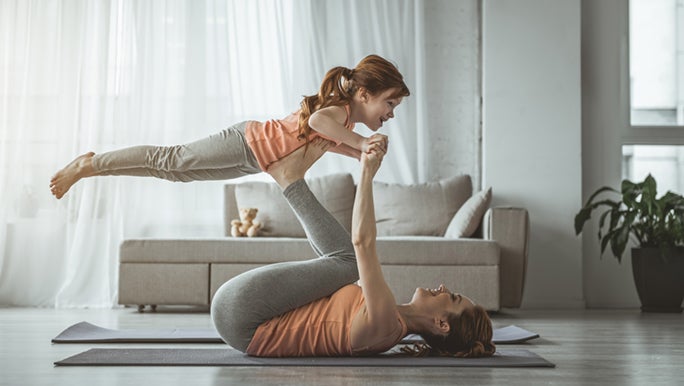
Be a physical activity role model for your kids. The more they see you being active, the more it will become a very natural part of their lifestyle.
Family exercise can be fun
Be a physical activity role model for your kids. The more they see you being active, the more it will become a very natural part of their lifestyle.
Spend weekends and holidays exercising together in a way you all enjoy. Try riding bikes up to the shops, discovering nature hiking up a hill or swimming together at the local pool. And don’t forget that Australians are famous for backyard cricket.
We all play a role in supporting our kids to have healthy lives, but that doesn’t mean they have to take part in the Olympics. Trying asking the kids to join you when you walk the dog, wash the car or do some gardening together.
You’ll be surprised how much incidental exercise can creep into your day.
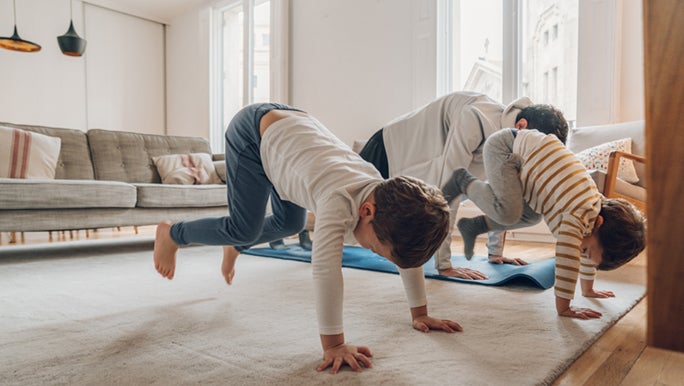
Good bodyweight exercises for children include multi-joint movements like burpees, squats, lunges or push-ups.
Kids don’t have to be sporty to be active
Some kids are naturally athletic. Some have great coordination. But what if your child doesn’t have either? “That’s OK,” says Brad. “Kids don’t have to be great at sport to be active.”
It’s easy to forget that ‘being active’ also includes playing – something kids do naturally. Encourage them to try:
- bike riding or scootering
- hula-hooping (remember yours?)
- jumping rope
- somersaults and handstands in the backyard
- playing at the park
- bodyboarding or surfing
- walking or hiking
And, for rainy or cold days, there are always kids’ exercises on YouTube. Some popular channels include:
- Miss Linky – kids’ indoor exercise videos
- The Body Coach - 5-minute moves just for kids
- Kidz Bop AU - dance along with the crew
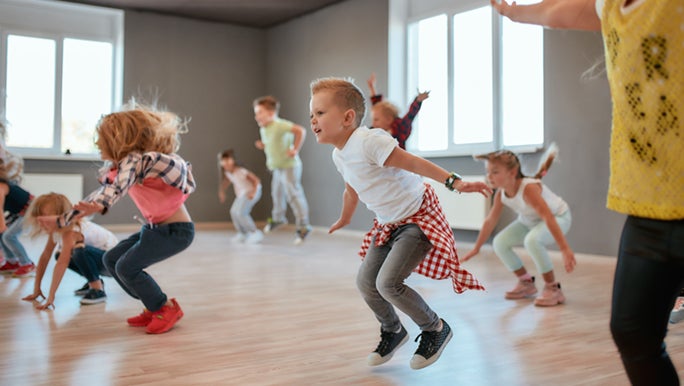
Kids benefit from being physically active in more ways than just becoming healthier. They also gain: improved self-esteem, critical thinking skills, more self-discipline and more integrity.
Encourage, but don’t force
If your child doesn’t like playing cricket, it doesn’t mean they won’t like basketball. But if they’ve come to the end of a long list of sports and still aren’t happy, it’s OK. Perhaps sport just isn’t for them.
That said, if your kid refuses to go outside for a bike ride or a walk to the park too, you might have to get more creative. Brad says, “Try rewarding them for any physical activity they do.” He recommends staying positive and finding ways to incorporate indoor play into their day.
“The last thing you want is for your kids to develop a negative association with living a healthy life,” he adds.
Making exercise fun for kids
The experts say we need to find time every day for our children to be physically active, but that ‘activity’ doesn’t have to be a team or organised sport. It doesn’t have to include a competition. It could simply be play.
Whatever it is, it just has to be fun.
Ways To Move
Learn how to keep your body active at any age of fitness level with our free Ways To Move programs.
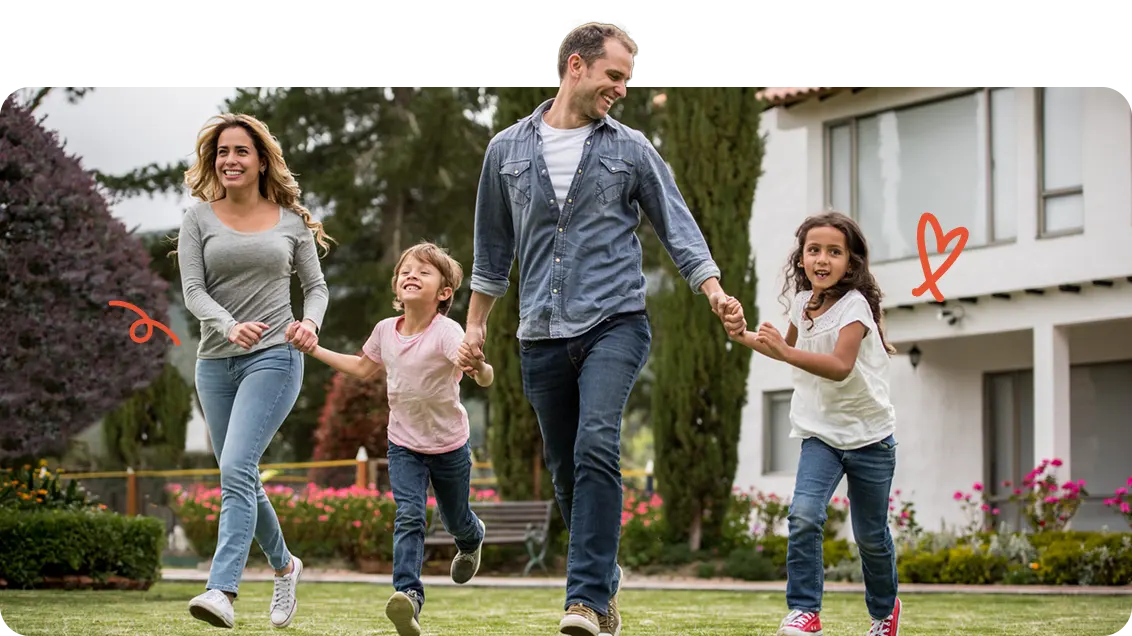
Related:
- Dietitian-approved foods and healthy snacks for kids
- 8 ways to get your picky eater to try new foods
- How can I help my kids to be more resilient?
Brad McIntosh is a highly-trained and well-regarded physiotherapist with a particular clinical and research interest in knee rehabilitation.
Reviewed by the healthylife Advisory Board June 2021